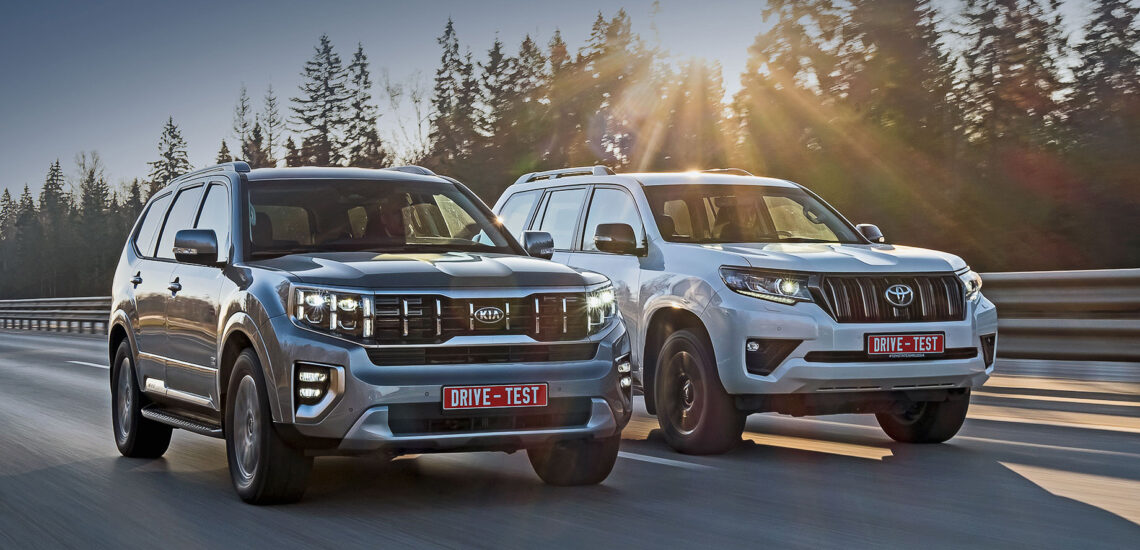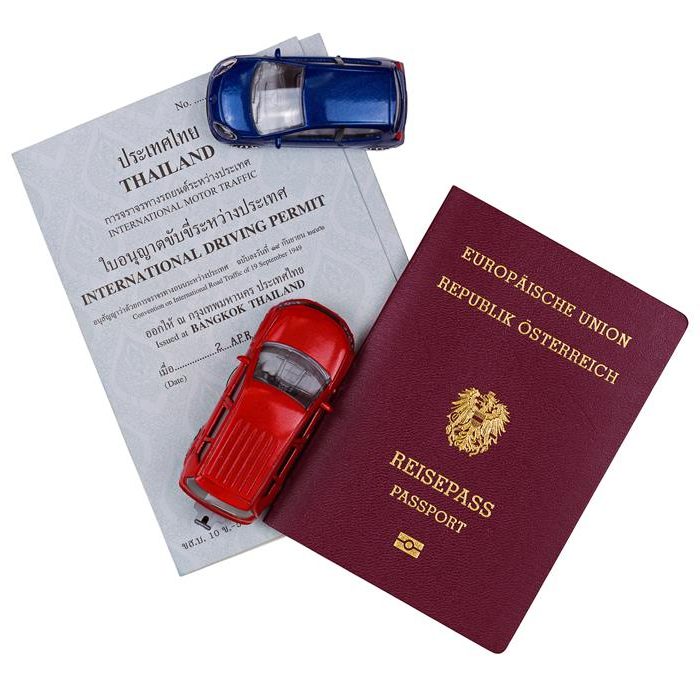Comparing Kia Mohave Prestige with Toyota LC150 Prado Prestige
I propose to leave the thesis that they are not competitors right away. The beautiful calculations of KIA marketers, according to which the frame Mohave is positioned below the Prado, have little in common with reality, where the buyer interacts with retail. We interviewed six dealers of each brand and found out that as the first hundred cars sold out, the mark-up on Mohave without special stages reached $ 17.700. The same amount, for example, is now being charged for a place in line for a scarce Cayenne!
The test Prado 2.8 Prestige differs only in color from the one participated in the previous comparison of frame SUVs, where a similar Toyota with adaptive KDSS stabilizers that are harmful to driving comfort will not be given away cheaper than $ 88.500, although at a price it costs less than $ 74.000. Thus, a gap of $ 8.800 is maintained within the test. Comparing the vehicle systems of the two Prestiges is easier than the base versions, and it’s easier to see who offers more for their money.
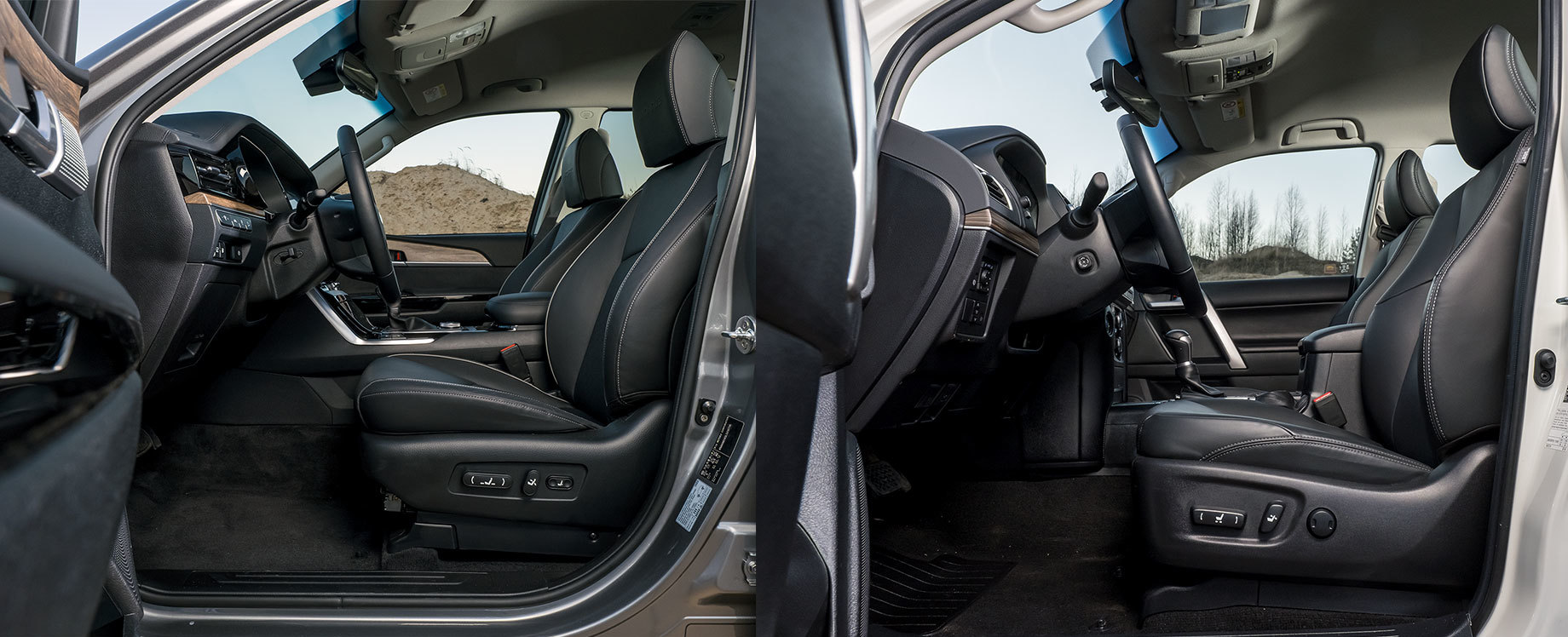
First of all, Mohave is seven-seater and not nominally: with a height of 6’1, I sit with a small margin in my knees, both in the second and third rows. Still, the wheelbase is 4.5 inches longer than the one of Toyota. The Kia is easier to get into thanks to wide openings and a more generous door opening angle. The cabin is slightly wider at the shoulders and more modern in appearance, but there is more room above the head and in front of the knees in the Toyota. Two seats in the Prado trunk appear only in the top version of Black Onyx, and its recommended price is almost $ 85.000. The retail price is about $ 97.000. By the number of cars Kia is more profitable.
Prados, of course, are being bought more with the 2.8 1GD-FTV diesel engine, which, you remember, has just become 200 hp. Since the restyling in 2016, somewhere Mohave has been using exclusively a three-liter turbodiesel V6 of the S-II series, inscribed in preferential 249 hp, paired with an eight-speed Hyundai Powertech automatic transmission. And, in my opinion, this tandem is the main trump card of Kia.
The power unit, undeservedly neglected by the creators of Hyundai-KIA cars, operates with a minimum vibrations both at idle and in motion. And when switching to Sport, the operating rotation rises to two thousand, and Mohave responds to any command of a successfully loaded accelerator with genuine enthusiasm. The sound is quiet, dense and pleasant. If there is a synthetic grain in it, born of the audio system processor, then it is well disguised.
Both the limiting capabilities and the convenience of acceleration control are good beyond their class. If you read the reviews of the owners, it turns out that at high mileage, the automatic gearbox sometimes goes crazy. But while the odometer is less than two thousand, gear changes are as logical as they are quick and soft. The box allows you to brake with the engine, which is useful in a city crowded with cameras. To throttle a few extra miles per hour down, just cover the throttle. Mohave is in no hurry to immediately run into a higher gear or disable the transmission in the latest fashion, and if the slope is steep, it will also tactfully tuck the lower one.
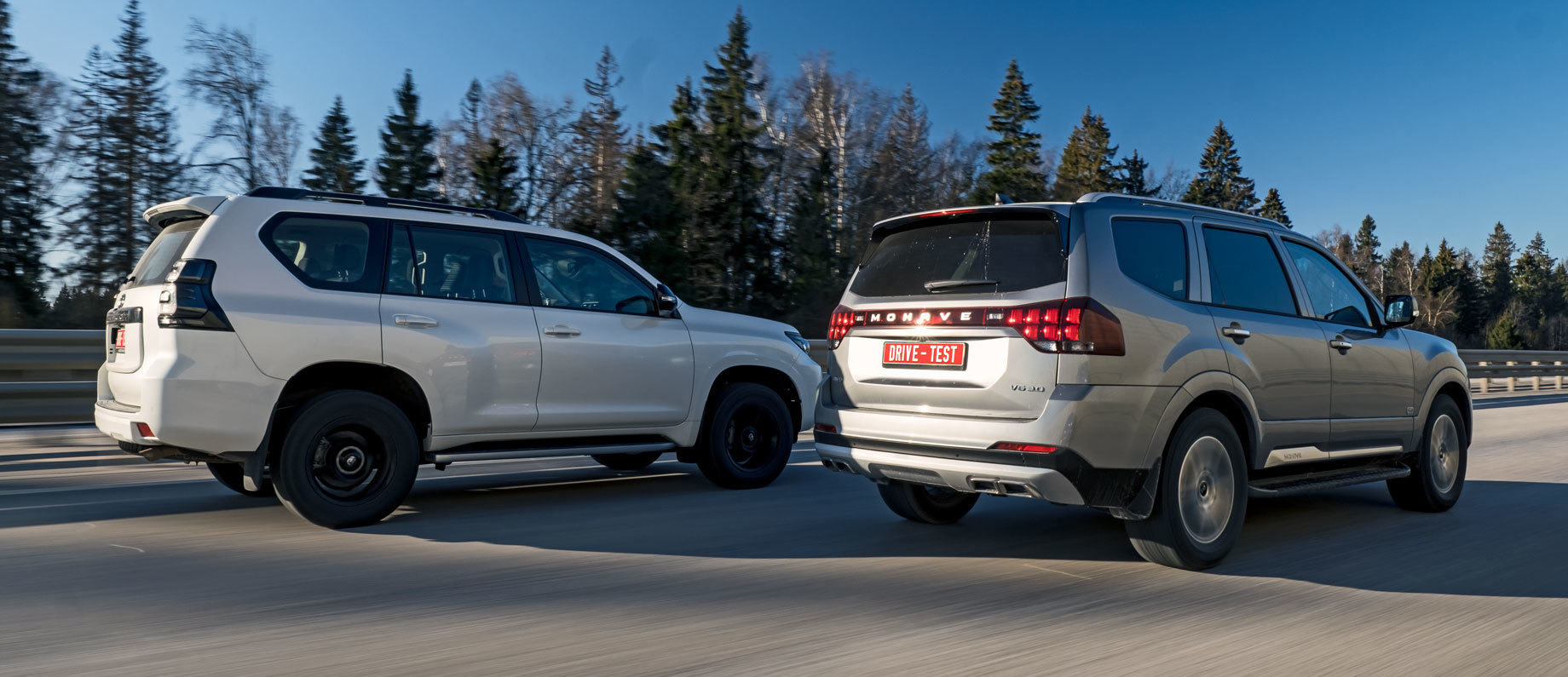
In a word, there are no questions about the operation of the power unit – definitely not in comparison with the 200-horsepower Toyota. It would seem that the difference is small — 204 cbm, nearly 50 hp and almost 50 N-m — especially since both cars with a driver are pulled by 2.3 tons. But the feelings are contrasting. Even though Prado weighs less, the work given to its turbodiesel is harder. In the entire speed range, it keeps the speed a little higher, makes a lot more noise and consumes more fuel. And given the greater load capacity of the LC150, the four-cylinder engine is not to be envied.
Acceleration control is a hassle: acceleration from Toyota needs to be squeezed out. The responses to the fuel supply are non-linear, you use a heavily damped pedal at large angles. The torque converter does not lock up in lower gears, which causes the revs to “float” with the accelerator position unchanged. The four-cylinder motor with 2.8 liters displays wonderful roulades, loading the controls with a distinct rattle. It vibrates strongly when driving in tension on the upgrade, barely the revs drop below one and a half thousand. You throw gas downhill and accelerate, the Prado slows down with the engine only in manual mode. The ratio of price and dynamics is not in favor of the phlegmatic LC150.
Both cars are on winter non-studded tires of the same dimension 265/60 R18. But Mohave uses the Hakkapeliitta R3 SUV, and Prado uses the VikingContact 7. And not everything I love about this Continental is good for Toyota. Thanks in large part to the Viking, the Prado is ridden quieter than the Mohave and smooths out the asphalt micro-profile better. But handling and straight-line stability suffer from the softness of the tread and pulls.
Compared to the tests at the summer Bridgestone, the chassis seems to be sluggish. And without that dubious brakes scare with premature blocking on fresh snow and a feeling of oil under the wheels during a sharp deceleration on the pavement. The stopping distance from 60 miles/h is over 164 feet. Nokian tires of Kia, on the other hand, are noisier and stiffer, but they please with tenacity. The fore-and-aft grip on snow is a pleasant surprise considering the car weight and harmonizes with the settings of the anti-lock braking system, which is not prone to panic.
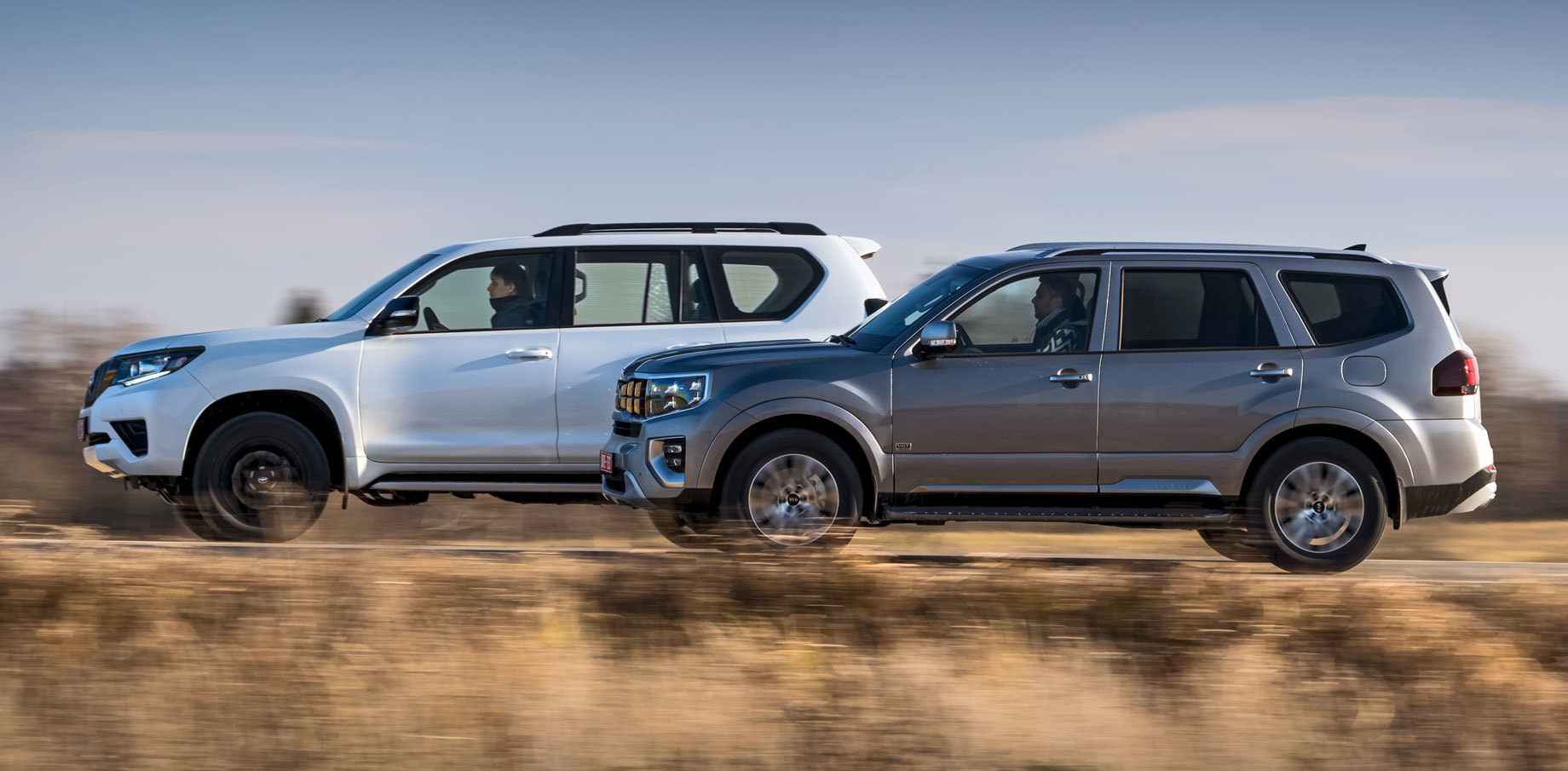
It cannot be said that the steering sensitivity of the Kia is higher. In the same turn, the rolling Mohave requires even more deflection of the steering wheel than the Prado, and between the extreme positions it makes about 3.2 revs against exactly three for Toyota. However, the Korean steering wheel is lighter, cleaner from parasitic vibrations, more neutrally loaded in the near-zero zone. The reactive action, despite the electric booster, is more informative, and the tread is firmer.
As a result, the Mohave takes less effort to change course and feels more responsive despite the rolling motion. Both cars hold the fast straight well, but the Kia is more confident even in the presence of a rut, requiring no steering at all. And it actively opposes changing lines without a turn signal. Moreover, the squeaky and admonishing lane retention system is turned on by default after starting the engine. Assistants in Mohave generally squeak too much for various reasons.
A temperamental, flexible engine, stability, tolerable noise, plus the stereotype of a hardy frame car — do you feel how the heroic image of such a space devourer is being formed? So the trip computer, after refueling an 82-liter tank, promises a cruising range of over 435 miles… But for long-distance trips, Mohave is suitable only for those who can get into a chair that tortured me behind an unregulated steering wheel. And the route is better to plan on roads of acceptable quality.
The Koreans refused to use air springs, both cars are equipped with the steel ones. On asphalt, the smoothness of the ride is comparable: both frame cars place accents a little differently, but they equally dislike joints and a short wave. The Prado, equipped with hydraulic cylinders of stabilizers, is more dependent on the transverse profile of the roadway, it seems to be more dense, it kicks more intensely, although it rounds off the peaks of vertical accelerations better.

Mohave reacts sharper to defects of the coating than to smooth bends, not without flabbiness, as if briefly losing self-control. In addition, it collects little things in abundance. Although it does not dangle from side to side, repeating the terrain, but the background from the unsprung masses appears in a wider range of situations.
Finally, Prado has a margin of tolerance that is completely incomparable to Mohave. I’m trying to determine the speed limit for the speed bump — at some point, I simply no longer have enough space for acceleration. I don’t want to continue the experiment with Kia after 25 miles/h. The comfortable limit is 18 miles/h. And the worse the road becomes, the less the influence of dynamics, the more confident Toyota drives.
In principle, you can force Mohave to sweep over uneven top-soil road, it will not fall apart. But pray that there is no hard hole or trench in the way. Because Mohave is like me: a fat city dweller. It seems that there is some kind of shock-absorbing layer, but if you roll over on slippery asphalt, it turns out that it is bony. And Prado is tubby, like those stocky guys with folded necks that ride it.
In my opinion, stress resistance is expensive, so I think that the ratio of price and quality of ride is better with Prado. Most importantly, 18-inch wheels for Kia are basic, and no matter how much you pay extra, Mohave will not become softer. And Toyota can be made more comfortable by choosing a cheaper version of Elegance Plus without the KDSS system instead of Prestige. It’s a rare case in the car market when economy leads to an improvement in the quality of life.

It makes even less sense to meddle in the fierce mud this time than in the Prado and Pajero Sport tests. And even more so to the tank range. The Mohave transmission is unpretentious: a wayward electronically controlled multi-plate clutch transmits the torque to the front wheels. Previously, at least there was a 4H mode for its forced blocking, now the distribution of torque along the axes is at the mercy of the computer. The rear gear limited slip differential is only 50% locked.
Toyota has a permanent all-wheel drive based on the interaxle Torsen, you can lock both the center and the rear interwheel differential. In addition, Prado is geometrically better prepared for off-road. The clearance is greater, whichever way of looking you choose. And Mohave, with its long base, even if it climbs a steep dump thanks to a reduction gear, requires a more thoughtful trajectory, otherwise it sits on the ledge with side member. Going into the sand, they are not able to protect those very wide and low foot steps from deformation, which make it easier to get into the cabin.
I limit myself to an outing into a sand pit near Ruza, but even there — at a completely harmless speed — I manage to tear off the rear bumper. The overlooked parapet leaves no chance for a long overhang and rips off hard plastic with fake exhaust pipes. The incident is covered by insurance, but, judging by the calculation requested from KIA, my mistake would have cost $ 1330: the list of spare parts for replacement has eight positions, including a torn fender liner, and the list of works has eleven.
And what if someone needs a transport eyelet located high on the frame on the right? There is no other attachment point on the back. Even a very old unpainted bumper was a pity to crush, so what can we say about a new one. It is not surprising that the owners of Kia frames prefer to install a towbar. At the same time, official towing devices for Mohave are not offered. The type approval of the vehicle says: “Towing a trailer is not provided.” But the procedure for making changes to the design is planned to be toughened.

The rear eyelet of Prado is exactly that towing — the bumper does not bother with its use. Yes, and the towbar is present in the official Toyota configurator, and with wiring, if necessary. So the price of Prado includes not only greater freedom of choice of destinations, but also branded accessories. Having observed the reaction of others to the test cars in the stream, I will also mention the freedom of decision-making on the road. Other road users are more tolerant of the Prado behavior. Hence, by the way, women driving tight Toyotas. Unusual impudent physiognomy of Mohave is not yet taken seriously.
But the after-market takes Mohave without jokes. Depending on the mileage, the prices for restyled three-year-olds range from $ 41.500 to almost $ 50.000. Of course, this is not Prado, for which everything is just starting from $ 50.000, but for the “Korean”, you see, it’s excellent. The V6 turbodiesel has a good reputation. And, consider, the whole image of this car is built around it. That’s why I have no complaints about how this deep restyling is carried out. But still: which car has the best ratio of price and consumer properties?
It’s not about Kia, because other crossovers can handle the same tasks for less money. At least, it’s the new Sorento. And imagine that Telluride, the antipode of Mohave, with a load-bearing body, a transversely mounted motor and a clutch in the rear wheel drive, comes to your country. Imagine for a moment that a turbodiesel adapts to it, capable of providing the same dynamics as the V6 3.0. In this case, who needs a frame car with the current chassis settings, that does not carry an ideological load, but only a timestamp?

Toyota, in its turn, is a very controversial car. But watch the reaction of the woman who was at the wheel of the Prado. It is hard, noisy, shaky for her, but calm. You can’t deceive a girl’s heart, it feels falsehood. And here it does not exist. If the brutal Mohave in the soul is a school bus, then Prado has what’s on its mind, then it’s on its tongue. And it can work off its price in such shit, where few people will dive in. And, it seems to me, stocky men and mothers of their children overpay not for some kind of legendary reliability, resale profit or hunting and fishing, but for the simplicity and sincerity of relationships.
This is a translation. You can read the original here: https://www.drive.ru/test-drive/kia/toyota/5fbe7fcdec05c4314700006e.html

